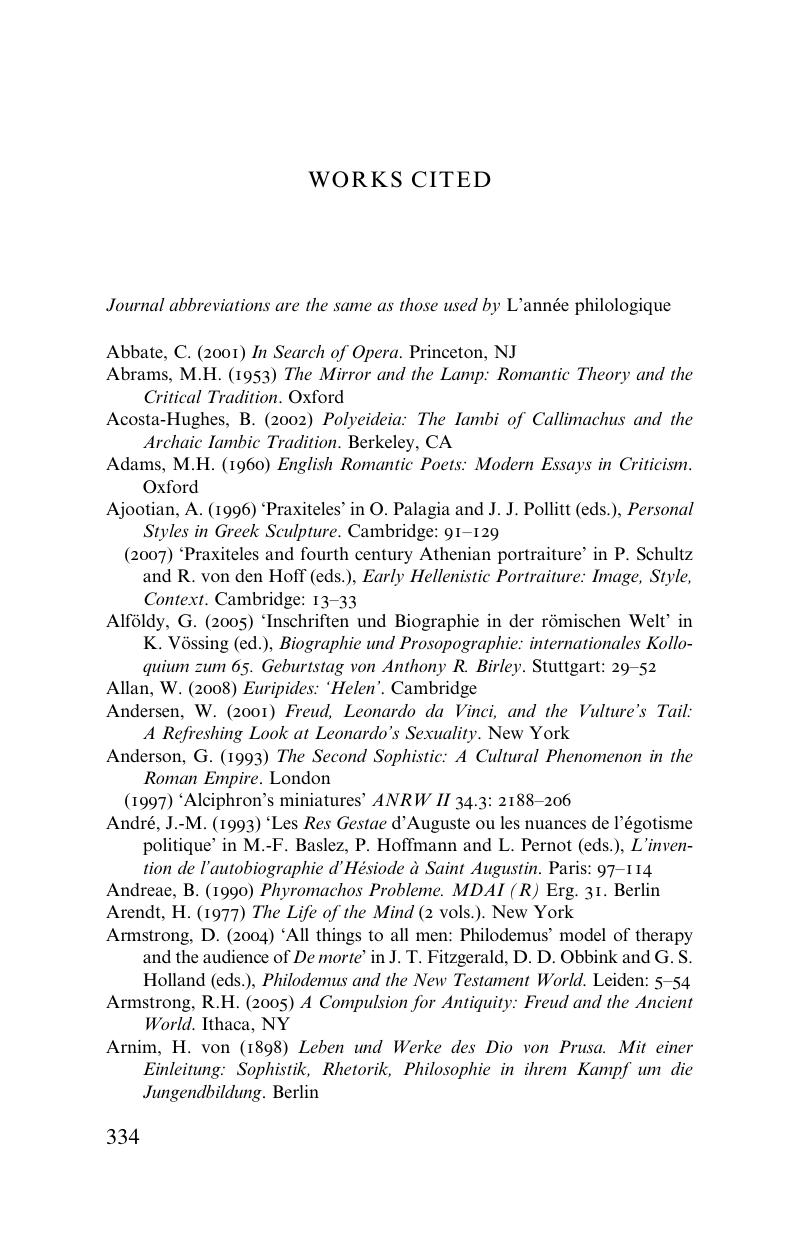Works cited
Published online by Cambridge University Press: 01 December 2016
Summary

- Type
- Chapter
- Information
- Creative Lives in Classical AntiquityPoets, Artists and Biography, pp. 334 - 368Publisher: Cambridge University PressPrint publication year: 2016

